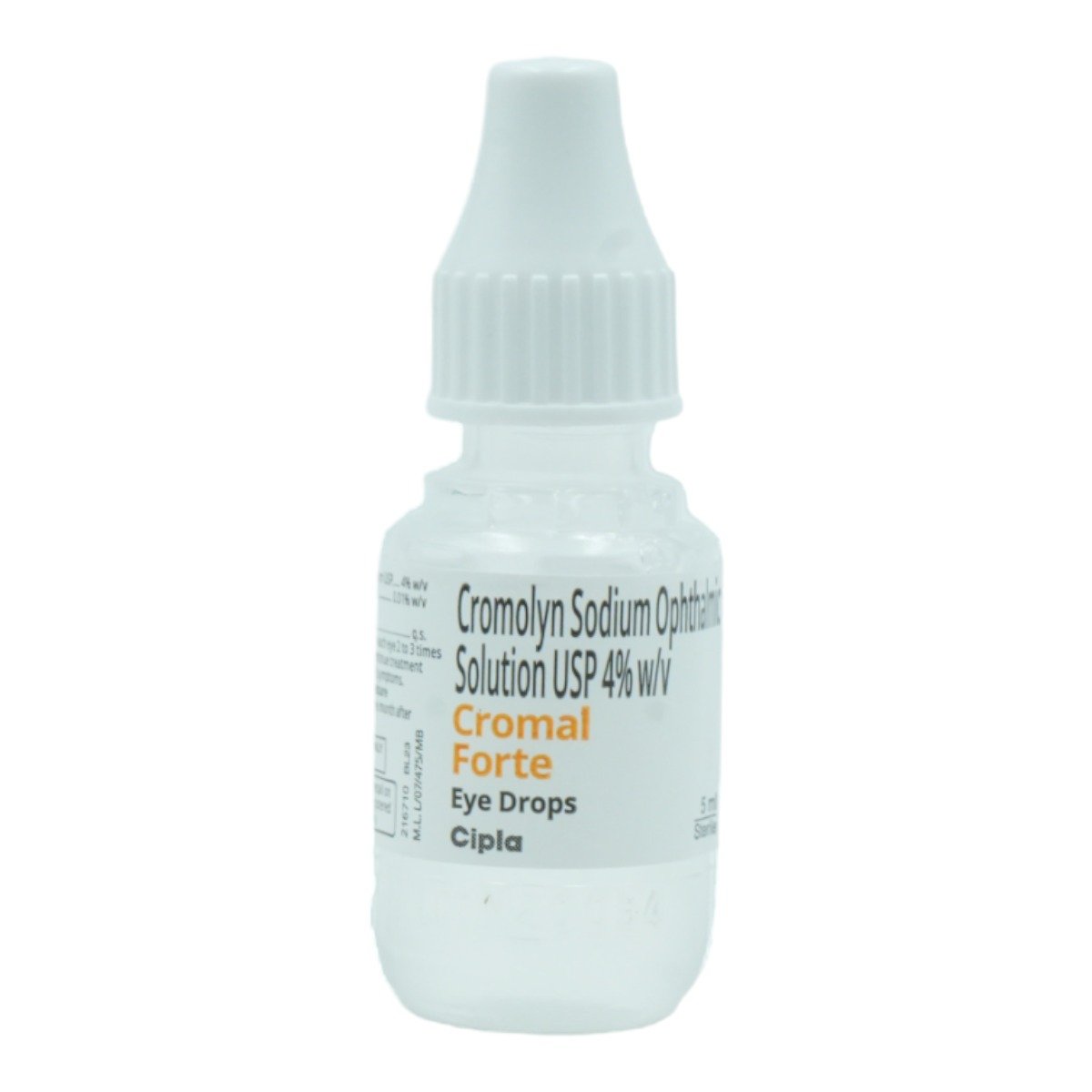Raycrom-4 Eye Drop

MRP ₹83.5
(Inclusive of all Taxes)
₹12.5 Cashback (15%)
know your delivery time
Provide Delivery Location
Composition :
Manufacturer/Marketer :
Consume Type :
Expires on or after :
Return Policy :

Secure Payment

Trusted by 8 Crore Indians

Genuine Products
Therapeutic Class
Country of origin
Manufacturer/Marketer address
Author Details
We provide you with authentic, trustworthy and relevant information
Disclaimer
Alcohol
Safe if prescribed
The interaction of alcohol with Raycrom-4 Eye Drop is unknown. If you have any concerns regarding this, please discuss them with your doctor.
Pregnancy
Consult your doctor
Limited information is available. Therefore, please consult your doctor if you are pregnant or planning pregnancy.
Breast Feeding
Consult your doctor
Limited information is available. Therefore, please consult your doctor before using Raycrom-4 Eye Drop if you are breastfeeding.
Driving
Safe if prescribed
Raycrom-4 Eye Drop may cause blurred vision for a short time immediately after using it. So, drive only when your vision is clear after using Raycrom-4 Eye Drop.
Liver
Consult your doctor
Raycrom-4 Eye Drop is usually safe if prescribed by a doctor. However, if you have any concerns regarding the use of Raycrom-4 Eye Drop in patients with liver problems, please consult your doctor.
Kidney
Consult your doctor
Raycrom-4 Eye Drop is usually safe if prescribed by a doctor. However, if you have any concerns regarding the use of Raycrom-4 Eye Drop in patients with kidney problems, please consult your doctor.
Children
Safe if prescribed
Limited information is available. Please consult a doctor before using Raycrom-4 Eye Drop in children.
Product Substitutes
About Raycrom-4 Eye Drop
Raycrom-4 Eye Drop belongs to a class of medicines called ‘anti-inflammatory or anti-allergic drugs’ used to treat eye redness, itchy and watery eyes caused by allergies such as hay fever, per hair and house dust mites. An allergy is an immune system response to foreign elements typically not harmful to your body. Eye allergy is when the eye becomes red and swollen, leading to inflammation, discomfort, and pain.
Raycrom-4 Eye Drop contains Sodium cromoglycate that works by stabilising mast cells (immune cells) and prevents the release of histamine, a substance responsible for causing allergic reactions. Thus, it prevents allergic response and reduces allergic symptoms.
Raycrom-4 Eye Drop is only for ophthalmic use (eyes). You are advised to use Raycrom-4 Eye Drop for as long as your doctor has prescribed it for you based on your medical condition. In some cases, you may experience stinging or burning in the eyes, blurred vision and eye irritation. Most of these side effects of Raycrom-4 Eye Drop do not require medical attention and gradually resolve over time. However, if the side effects worsen or persist, please consult your doctor.
If you are allergic to Sodium cromoglycate or other medicines, please tell your doctor. If you are pregnant or breastfeeding, please consult a doctor before using Raycrom-4 Eye Drop. Drive only if your vision is clear, as Raycrom-4 Eye Drop may cause temporary blurred vision immediately after using it. If you are using two eye medications, wait for at least 5 to 15 minutes before using the other eye medications. Please consult your doctor immediately if you develop any other eye condition while using Raycrom-4 Eye Drop.
Uses of Raycrom-4 Eye Drop
Medicinal Benefits Mweb
Key Benefits
Raycrom-4 Eye Drop contains Sodium cromoglycate, an anti-inflammatory or anti-allergic agent used to treat eye redness, itchy and watery eyes caused by allergies such as hay fever, per hair and house dust mites. It works by stabilising mast cells (immune cells) and prevents the release of histamine, a substance responsible for causing allergic reactions. Thus, it prevents allergic response and reduces allergic symptoms.
Directions for Use
Side Effects of Raycrom-4 Eye Drop
- Stinging or burning in the eyes
- Blurred vision
- Eye irritation
Drug Warnings
If you are allergic to Sodium cromoglycate or other medicines, please tell your doctor. If you are pregnant or breastfeeding, please consult a doctor before using Raycrom-4 Eye Drop. Drive only if your vision is clear, as Raycrom-4 Eye Drop may cause temporary blurred vision immediately after using it. You are advised to remove soft contact lenses before using Raycrom-4 Eye Drop as it may cause discolouration of the soft contact lens. However, you can put them back after 15 minutes of using Raycrom-4 Eye Drop. Do not touch the container tip to the eye, eyelids or surrounding areas as it may contaminate Raycrom-4 Eye Drop and cause eye infections. If you are using two eye medications, wait for at least 5 to 15 minutes before using the other eye medications. Please consult your doctor immediately if you develop any other eye condition while using Raycrom-4 Eye Drop.
Drug-Drug Interactions
Drug-Drug Interactions
Login/Sign Up
Drug-Food Interactions
Drug-Food Interactions
Login/Sign Up
Drug-Diseases Interactions
Drug-Diseases Interactions
Login/Sign Up
Habit Forming
Diet & Lifestyle Advise
- It is advised to avoid contact with known allergens (allergy-causing agents) such as pollen, dust, etc.
- Use only scent-free detergents and soaps.
- Install an air purifier at home.
- Regularly vacuum and dust.
- Limit the carpets, curtains, soft toys and soft furnishings at home.
- Maintain personal hygiene and keep your surroundings clean.
All Substitutes & Brand Comparisons
RX
Out of StockKazicrom Eye Drop
₹55
(₹4.95/ 1ml)
34% CHEAPERRX
Out of StockSicrom 4% Eye Drop
₹62.4
(₹5.62/ 1ml)
25% CHEAPERRX
Out of StockOpticrom Forte Eye Drop
Sunways (India) Pvt Ltd
₹40.38
(₹7.27/ 1ml)
3% CHEAPER
Buy best Ocular products by
Entod Pharmaceuticals Ltd
Ajanta Pharma Ltd
Sunways (India) Pvt Ltd
Sun Pharmaceutical Industries Ltd
Cipla Ltd
Micro Labs Ltd
Allergan Healthcare India Pvt Ltd
Intas Pharmaceuticals Ltd
Raymed Pharmaceuticals Ltd
Nri Vision Care India Ltd
FDC Ltd
Jawa Pharmaceuticals India Pvt Ltd
Indoco Remedies Ltd
Sapient Laboratories Pvt Ltd
Senses Pharmaceuticals Pvt Ltd
Centaur Pharmaceuticals Pvt Ltd
Neomedix Healthcare India Pvt Ltd
Aromed Pharmaceuticals
Optho Remedies Pvt Ltd
Aurolab
Austrak Pvt Ltd
Lupin Ltd
Mankind Pharma Pvt Ltd
Zivira Labs Pvt Ltd
Optho Pharma Pvt Ltd
Synovia Life Sciences Pvt Ltd
Akumentis Healthcare Ltd
Eyekare
His Eyeness Ophthalmics Pvt Ltd
Protech Remedies Pvt Ltd
Runyon Pharmaceutical Pvt Ltd
Alcon Laboratories Inc
Syntho Pharmaceuticals Pvt Ltd
Alembic Pharmaceuticals Ltd
Bell Pharma Pvt Ltd
Klar Sehen Pvt Ltd
Sentiss Pharma Pvt Ltd
Irx Pharmaceuticals Pvt Ltd
Optho Life Sciences Pvt Ltd
Phoenix Remedies Pvt Ltd
Alkem Laboratories Ltd
Doctor Wonder Pvt Ltd
Hicare Pharma
Ipca Laboratories Ltd
Neon Laboratories Ltd
Okulus Drugs India
Pharmtak Ophthalmics (I) Pvt Ltd
Berry & Herbs Pharma Pvt Ltd
Glow Vision Pharmaceuticals
Kaizen Drugs Pvt Ltd
Choroid Laboratories Pvt Ltd
Indiana Opthalamics Pvt Ltd
Optica Pharmaceutical Pvt Ltd
Pharmatak Opthalmics India Pvt Ltd
Samarth Life Sciences Pvt Ltd
Vibgyor Vision Care
Mofon Drugs
Novartis India Ltd
Pharmia Biogenesis Pvt Ltd
Zydus Cadila
Appasamy Ocular Devices Pvt Ltd
Leeford Healthcare Ltd
Medivision Pharma Pvt Ltd
Orbit Life Science Pvt Ltd
X-Med Royal Pharma Pvt Ltd
Zee Laboratories Ltd
Aarma Laboratories
Guerison MS Inc
Laborate Pharmaceuticals India Ltd
Xtas Pharmaceuticals
Accurex Biomedical Pvt Ltd
Blucrab Pharma Pvt Ltd
Does Health Systems Pvt Ltd
Flagship Biotech International Pvt Ltd
Lavue Pharmaceuticals Pvt Ltd
Nutrilis Healthcare Pvt Ltd
Ursa Pharm India Pvt Ltd
Vee Remedies
Vyonics Health Care India Pvt Ltd
Warren Pharmaceuticals Pvt Ltd
Abbott India Ltd
Accvus Pharmaceuticals
Akums Drugs & Pharmaceuticals Ltd
Cadila Healthcare Ltd
Carevision Pharmaceuticals Pvt Ltd
Dey's Medical Stores (Mfg) Ltd
East West Pharma India Pvt Ltd
Eyedea Pharmaceuticals Pvt Ltd
Nimbus Healthcare Pvt Ltd
Ocuris Pharmaceuticals Pvt Ltd
Sherings Pharmaceuticals
Tarks Pharmaceuticals Pvt Ltd
Vcan Biotech
Vision Medilink
Aice Health Care Pvt Ltd
Appasamy Pharmaceuticals Pvt Ltd
Asperia Lifescience Pvt Ltd
Beatum Healthcare Pvt Ltd
East India Pharmaceutical Works Ltd
Grevis Pharmaceutical Pvt Ltd





